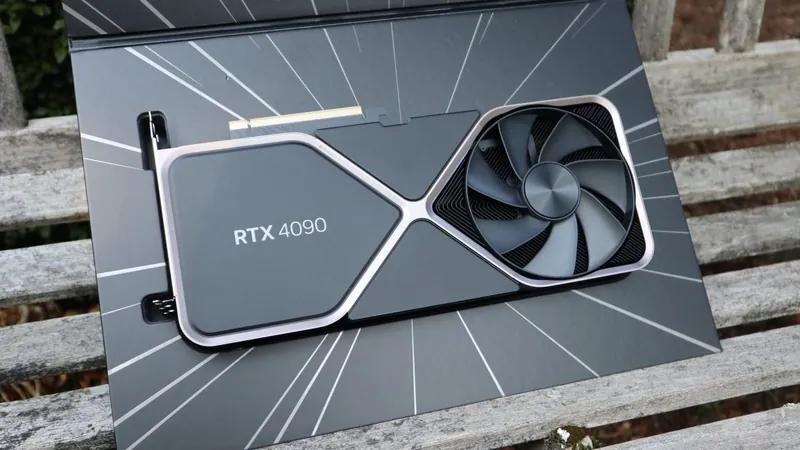
Prepare for Power: Nvidia's Upcoming RTX 50 Series GPUs Demand Insane Power Requirements!
2025-01-03
Author: Yan
Nvidia's Anticipated RTX 50-Series Launch
Nvidia is set to make waves in the graphics card market with the anticipated launch of its RTX 50-series at the Consumer Electronics Show (CES) next week, featuring models like the RTX 5090, RTX 5080, RTX 5070 Ti, and RTX 5070. The RTX 5090, in particular, is generating considerable buzz as it promises to outperform the formidable RTX 4090, which has dominated the high-end segment since its release in 2022.
Power Consumption Concerns
However, tech enthusiasts should brace themselves for an unprecedented leap in power consumption. According to leaks from sources such as VideoCardz, the RTX 5090 is expected to have a thermal design power (TDP) of 575 watts—significantly higher than the 450 watts required by the RTX 4090. This spike in power demands is paralleled by the RTX 5080, which will see its TDP climb to 360 watts, up from 320 watts of the previous generation's RTX 4080 Super.
12VHPWR Connector Limitations
These substantial power requirements signal that the RTX 5090 will approach the limits of the 12VHPWR connector, which can deliver a maximum of 600 watts. When factoring in the additional 75 watts available from the PCI Express slot on motherboards, the theoretical maximum power draw could eclipse 675 watts for setups using a single 12VHPWR connector.
Efficiency vs. Consumption
Despite these substantial ratings, it is important to note that such elevated peak power consumption figures do not necessarily equate to higher power draw during gaming sessions. The efficiency leaps in performance per watt may yield compelling results, potentially making these cards valuable contenders for system upgrades in energy efficiency.
Power Supply Recommendations
If the rumors hold true and you are eyeing an upgrade to the RTX 5090, now is the time to consider your power supply configuration. Nvidia recommends a minimum of 850 watts for the RTX 4090 to accommodate power needs while ensuring stability for the rest of your system. With the RTX 5090's additional 125 watts on top of that requirement, it is likely that prospective users will need to invest in a power supply rated for at least 1,000 watts to handle the demand safely.
Conclusion
As the launch approaches, gamers and PC builders alike should prepare for what could be a monumental shift in not just GPU performance, but also power budgeting. Stay tuned for further updates as we dive deeper into the specifics of these groundbreaking graphics cards!

 Brasil (PT)
Brasil (PT)
 Canada (EN)
Canada (EN)
 Chile (ES)
Chile (ES)
 Česko (CS)
Česko (CS)
 대한민국 (KO)
대한민국 (KO)
 España (ES)
España (ES)
 France (FR)
France (FR)
 Hong Kong (EN)
Hong Kong (EN)
 Italia (IT)
Italia (IT)
 日本 (JA)
日本 (JA)
 Magyarország (HU)
Magyarország (HU)
 Norge (NO)
Norge (NO)
 Polska (PL)
Polska (PL)
 Schweiz (DE)
Schweiz (DE)
 Singapore (EN)
Singapore (EN)
 Sverige (SV)
Sverige (SV)
 Suomi (FI)
Suomi (FI)
 Türkiye (TR)
Türkiye (TR)
 الإمارات العربية المتحدة (AR)
الإمارات العربية المتحدة (AR)